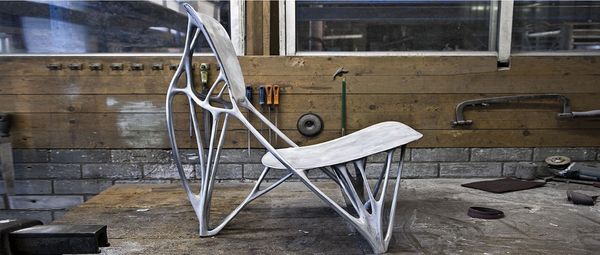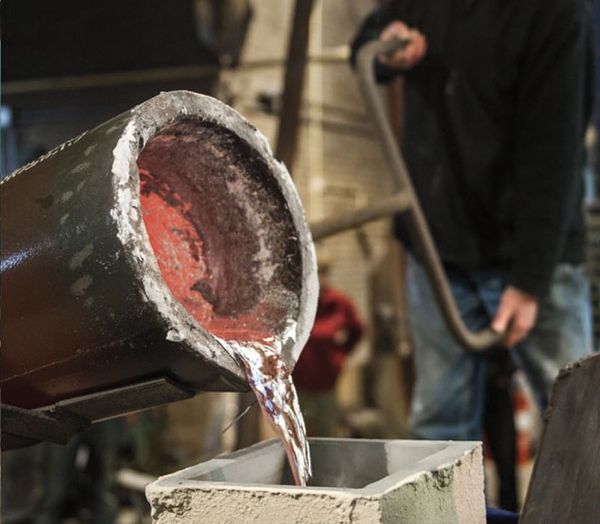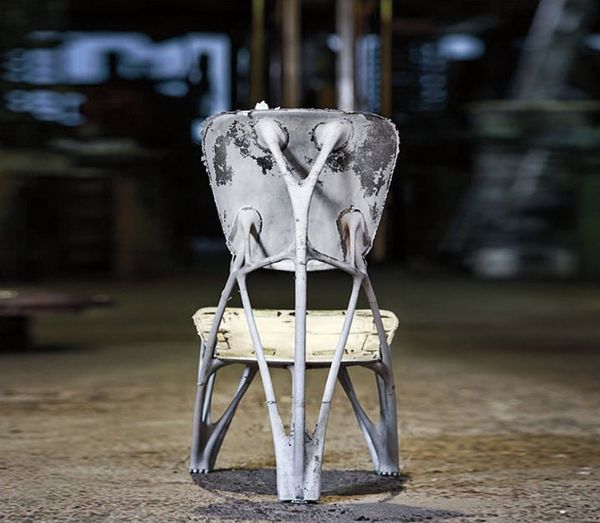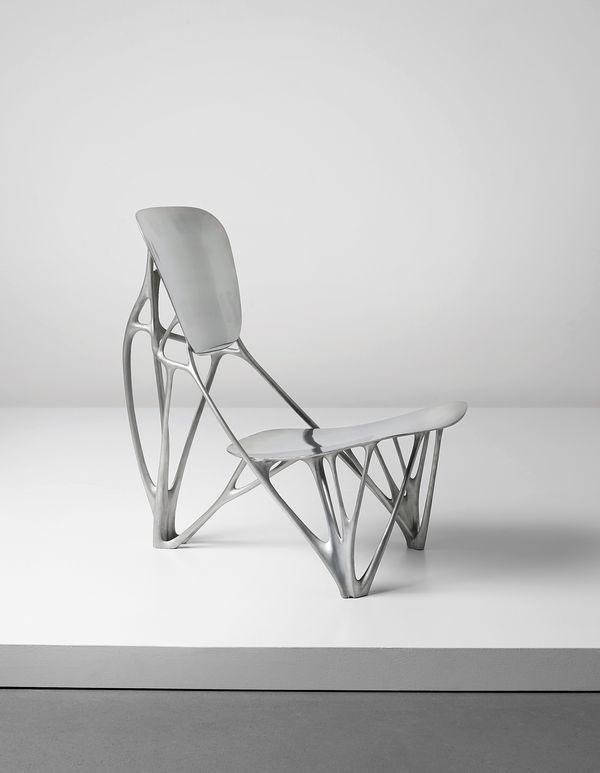Joris Laarman 'Bone' chair, 2006 (detail)
Very few designs of the 21st century have influenced and inspired furniture practice and design debate as much as Joris Laarman’s 'Bone Chair' from the Dutch designer’s 2004 'Bone Furniture' series, where computer algorithms are applied to simulate natural growth structures in a variety of furniture designs. The 'Bone Chair' is often regarded as the most important object in the series; Mark Wilson, chief curator of the Groninger Museum, comments:
"Unsurprisingly, the 'Bone Chair' has been included in major museum collections such as the Museum of Modern Art in New York and the Rijksmuseum in Amsterdam."
Joris Laarman told me once that he has always been drawn to the science and technology pages of newspapers rather than to their arts sections. It was an article on the science site Noorderlicht that he quotes as the beginning of the 'Bone Furniture’'series. There he learned about the fascinating research of German academics Claus Mattheck and Lothar Hartzheim, who created a computer algorithm that mimicked natural growth structures. Their research was based on observations about the ability of trees to optimise their growth by adding material only where strength is needed.

Production process of the ‘Bone’ chair © Joris Laarman Lab / Photography: Daniel Nicolas
When combined with research into bones, which take material away where not necessary, a highly optimised economy of material can be predicted. In 1998, German car manufacturer Adam Opel GmbH used this research to design a software programme for manufacturing a more efficient engine mount. The radicalism of this approach can only be imagined today when reminded that in the 1990s creating a production model through computer simulation seemed more an area of science fiction than manufacturing sides. It also highlights the exceptional privilege that Laarman experienced when collaborating with Opel GmbH and being allowed to use their CAD software for applications to design furniture.
In the design process, Laarman predetermined the position of seat and back of the chair as fat surfaces as well as the three points on the ground where the chair would rest which would be load bearing. The remaining design work was up to the computer. The software is based on a subtracting principle where material is removed from a block using the predetermined areas and points as constant (stress and load bearing) parameters for the final structure. This process is remarkably similar to bone structures relying on strengthening and reinforcing areas under stress.
Where trees have the ability to add material where strength is needed, bones have the ability to also reduce material where it is not.
— Joris Laarman


Production process of the ‘Bone’ chair © Joris Laarman Lab / Photography: Daniel Nicolas
A result of this procedure is the organic shape of the chair. However, the final appearance is again the work of the designer who is tweaking and smoothing the final shape of the computer simulation. The mix of digital and craft, passive and active approach is continued in the fabrication of the physical piece of furniture using casting as technique. A 3D-printed model allows creating the ceramic mould of the chair which is lost in the process to retrieve the hollow-framed aluminium structure. This final object undergoes a long labour-intensive process of hand polishing. The final result is a highly aesthetic object deriving from applications of mathematical principles aimed at an economy of design while not compromising on function. The chair celebrates the achievement of a remarkable efficiency of material use and a high strength-to-weight ratio of aluminium which allows the relatively light chair to support several times the weight of an ordinary chair. Writer David Dick-Agnew commented:
"The result is something so complex that no human mind could arrive at it unaided, and in fact even a supercomputer couldn’t create a design like this in one swipe. Only through the repetition of generations of simulation can a computer produce the computational efort necessary to come up with a design so high in information... the Bone Chair represents a design so advanced that it would literally have been impossible to create even a generation ago."
In addition to the model illustrated here, 'Bone Furniture' includes an armchair, a chaise, a rocker, a table ('Bridge'), and a shelf ('Branch'). All pieces were manufactured in limited editions. However, a major furniture manufacturer together with the designer invested many years of research and prototyping to amend the design of the chair to enable mass-manufacturing. This process came to an end which was partly due to the realisation that current production methods are not sufficient to support the mass-production of such a complex structure — another indication of the visionary and innovative character of this design.
Joris Laarman graduated from the famous Design Academy Eindhoven (NL) in 2003. Only one year later, together with his wife Anita Star, he established Joris Laarman Lab. The 'lab' is the most significant aspect of the studio’s title, indicating a desire for investigation, experimentation and testing. Laarman sometimes calls the studio 'an experimental playground' where scientists and programmers feel as much at home as craftsmen and artists. The multidisciplinary approach is key to Joris Laarman Lab where concepts, processes, technologies or materials are invented, prototyped and made. One of the studio’s current projects is a 3D-printed steel bridge that is installed while printed by two robots in the centre of Amsterdam (Oudezijds Achterburgwal canal).
The Groninger Museum, has just presented the first major retrospective of Laarman’s work, which travels subsequently to the Musée des Arts Décoratifs, Paris; the Cooper Hewitt, Smithsonian Design Museum, New York; the High Museum of Art, Atlanta; and the Museum of Fine Arts, Houston.
— Dr. Jana Scholze, Associate Professor, Curating Contemporary, Design School of Art, Design and Architecture, Kingston University, London

